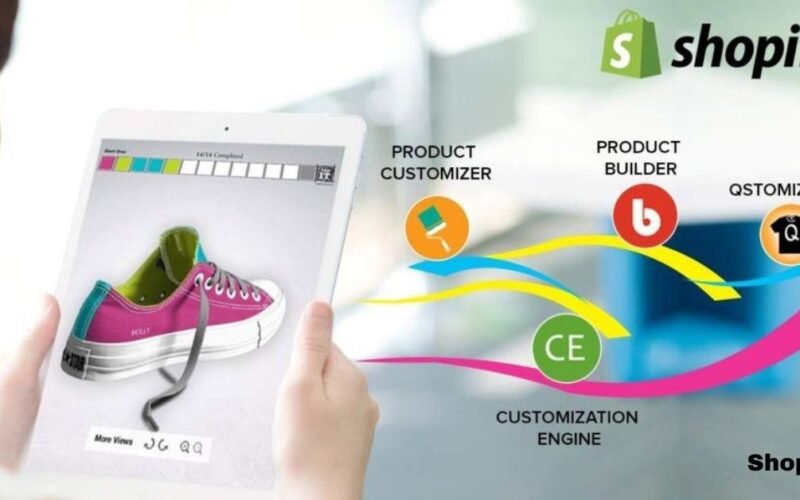Website Builde In today’s fast-paced digital world starting an online business can seem daunting. But what if you could build a professional e-commerce store that drives sales in just 24 hours? Shopify offers a simple, powerful platform that makes this possible for entrepreneurs of all levels. Whether you’re a seasoned pro or a complete beginner, creating a Shopify store that sells doesn’t have to be complicated. In this article, we’ll guide you through the process of building an optimized Shopify store using the platform’s effortless website builder, empowering you to launch a successful e-commerce business in no time. Get ready to transform your entrepreneurial dream into reality with actionable tips and expert advice!
Why Shopify Is The Ideal Platform For Building A Store That Sells
Shopify has become one of the leading e-commerce platforms due to its ease of use, scalability, and powerful features. But why should you choose Shopify to launch your online store?
- User-Friendly Interface: Even beginners can navigate the platform with ease. No coding skills required—just a simple drag-and-drop interface.
- Scalability: Whether you’re starting small or planning for big growth, Shopify can scale with your business.
- Secure and Reliable: Shopify provides built-in SSL certificates to ensure a secure shopping experience, which can help build trust with your customers.
- Mobile Optimization: With mobile commerce on the rise, Shopify automatically optimizes your store for mobile devices, ensuring your site looks great on smartphones and tablets.
- Integrated Payment Solutions: Shopify integrates with various payment gateways, including Shopify Payments, PayPal, and more, making it easy for customers to pay securely.
Step 1: Setting Up Your Shopify Store in Less Than 1 Hour
Building a Shopify store may sound complex, but with its intuitive design, setting up an online store can take as little as an hour. Here’s a step-by-step guide to getting started:
1.1 Sign Up for Shopify
To begin, sign up for a 14-day free trial on Shopify’s website. This will give you access to all features, allowing you to build your store without any upfront commitment.
1.2 Choose a Store Theme
Shopify offers a wide range of themes (both free and paid). Choose a theme that fits your brand and target audience. Some popular themes include:
- Debut: Clean and simple, great for small inventories.
- Brooklyn: Ideal for fashion stores with a modern aesthetic.
Each theme is fully customizable, so feel free to adjust the design later as needed.
1.3 Set Up Your Store’s Basic Information
Once you’ve selected your theme, head to the admin panel and input your store’s name, logo, and basic information such as shipping address, tax rates, and payment methods.
1.4 Customize Your Store’s Design
Shopify’s drag-and-drop website builder makes it easy to personalize your online store. Adjust colors, fonts, and layout options until you achieve a design that reflects your brand identity.
Step 2: Add Products and Organize Your Store for Easy Navigation
With your store’s basic setup complete, it’s time to add products and categories that make it easy for your customers to browse and purchase.
2.1 Adding Products
Click on the “Products” section in the Shopify admin dashboard and start adding product listings. For each product, provide:
- A clear, high-quality image (at least 1000px by 1000px)
- Compelling product descriptions that focus on benefits and features
- Prices and inventory details
- Shipping options (if applicable)
2.2 Organizing Product Categories
To make navigation easier for your customers, organize your products into categories (collections). For example:
- Apparel: T-shirts, hoodies, and accessories.
- Home Decor: Wall art, furniture, and lighting.
Step 3: Set Up Payment Options for Seamless Transactions
To process payments, set up your Shopify Payments or choose a third-party gateway like PayPal. Shopify automatically supports over 100 payment options, including major credit cards and digital wallets.
Tip: Offering multiple payment options (e.g., Apple Pay, Google Pay) can increase your conversion rate by providing convenience to a wider audience.
Step 4: Optimize Your Shopify Store for SEO Success
A beautifully designed store is only one part of the equation. To increase visibility and drive traffic, you must optimize your Shopify store for search engines. Follow these SEO tips:
4.1 Optimize Your Page Titles and Meta Descriptions
- Title Tags: Ensure every page (product page, home page, etc.) has a unique and relevant title tag. Include the primary keyword naturally, e.g., “Buy Stylish T-Shirts Online | [Your Brand Name] Shopify Store.”
- Meta Descriptions: Write a compelling summary of each page using 150-160 characters. Add relevant keywords but avoid keyword stuffing.
4.2 Use Descriptive Alt Text for Images
Search engines can’t “see” images, but they can read alt text. Be sure to add alt text for all images, describing them accurately while incorporating relevant keywords.
4.3 Add Internal and External Links
Linking internally to other pages within your store (e.g., from a product page to a related blog post) helps with SEO. Additionally, linking to authoritative external sources can improve your store’s credibility.
4.4 Improve Site Speed
Fast-loading sites rank better in search engines. Optimize your images and reduce unnecessary scripts to enhance site performance.
Step 5: Launching Your Shopify Store and Marketing for Success
Once your store is set up and optimized, it’s time to launch. But don’t just hit the “Publish” button and forget about it! A successful Shopify store requires consistent marketing efforts.
5.1 Social Media Marketing
Leverage social media platforms like Instagram, Facebook, and Pinterest to build brand awareness. Run paid ads, post regularly, and engage with your audience to drive traffic to your store.
5.2 Email Marketing
Collect email addresses from customers and potential buyers to build a mailing list. Send newsletters, promotions, and product updates to keep customers engaged and increase repeat purchases.
5.3 Influencer Collaborations
Partnering with influencers in your niche can help you reach a broader audience. Influencers can showcase your products to their followers, boosting your brand’s visibility and driving sales.
Conclusion
Building a Shopify store that sells in 24 hours is not only possible but achievable for anyone. By following the steps outlined in this guide, you can create a high-performing, user-friendly online store that generates sales from day one. From setting up your store to optimizing it for SEO and launching effective marketing campaigns, Shopify’s platform offers everything you need to succeed.
So, are you ready to take the leap and build your own online store? Start your Shopify free trial today and watch your business soar! Share your thoughts in the comments below, and be sure to explore more resources to continue your entrepreneurial journey.
For more information visit shopify website builder

